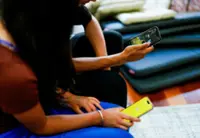In the shadow of ever-present social media, more and more women are facing hateful messages, cyberstalking and the theft of their login data. — Photo by Amanda Dalbjörn on Unsplash
In the shadow of ever-present social media, more and more women are facing hateful messages, cyberstalking and the theft of their login data.





